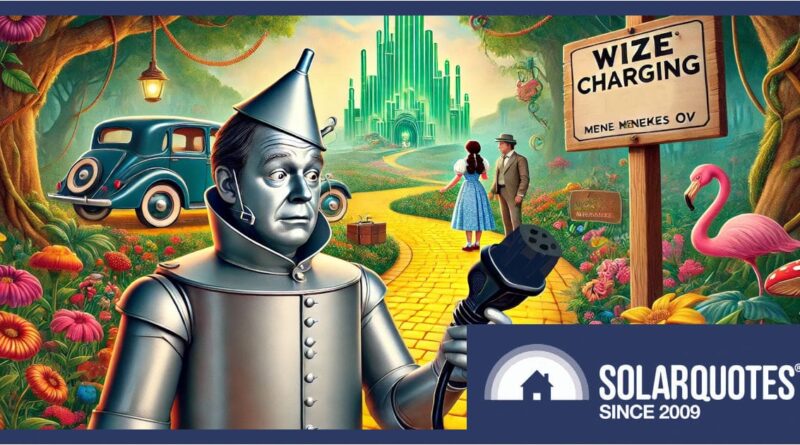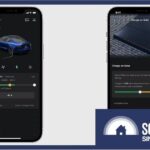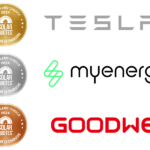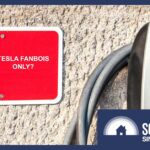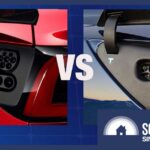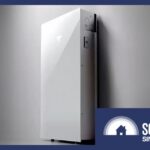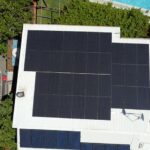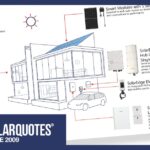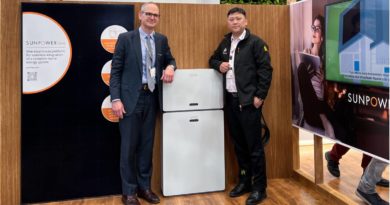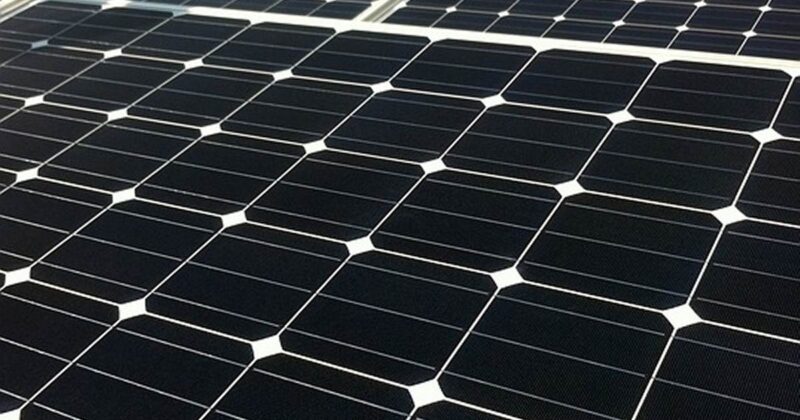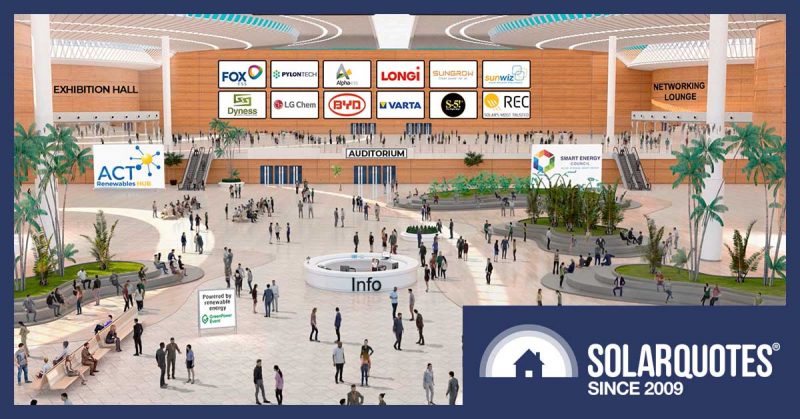Tesla’s EV Charger Problems Have Been Sorted in SA
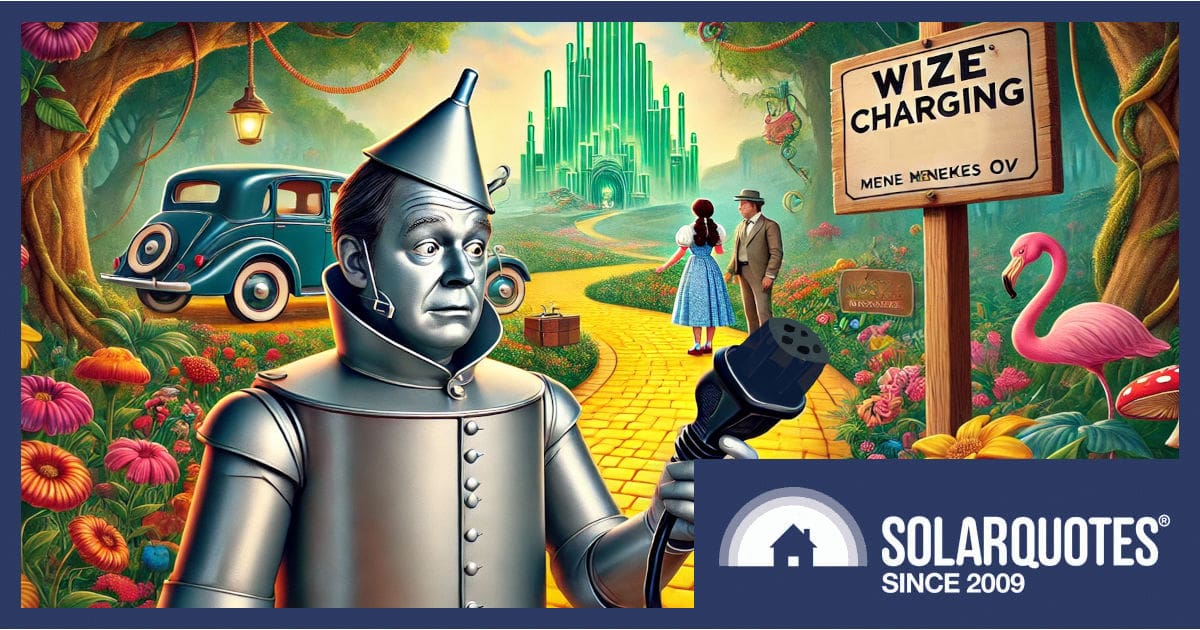
Some weeks ago, I was asked a simple question; Can the cheap, simple, popular Tesla Wall Connector home EV charger still be installed in South Australia? It turns out the answer is yes, but read on, and we’ll explain why we had serious doubts.
With an increasing number of EVs in Wonderland, Tesla’s Wall Connector was always the Tin Man of EV chargers. We recommended it as honest and shiny but lacking any brains. However, questions arose from recent rule updates for EV chargers on South Australian Power Network’s (SAPN’s) distribution network mandating OCPP for home chargers installed from July 1 2024.
I thought this wouldn’t be too hard to fact-check, but after three phone calls and over an hour on hold, Tesla support didn’t provide a conclusive answer.
“Don’t know” said one Tesla call center technician, while another was emphatic “No, we don’t support OCPP”. Emails to 4 different addresses went unanswered.
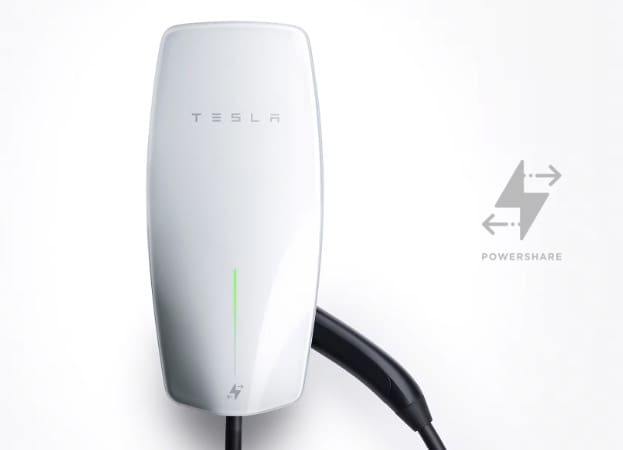
Tesla’s only clever trick is to turn itself down so you don’t blow the main service fuse.
All I could confirm was that the Mk.3 version of the Tesla Wall Connector has a simple charging timer and is clever enough to share power so you don’t overload your mains connection and cause your own blackout. Anything smarter relies on you having a Tesla vehicle.
New South Australian EV Charging Rules
At the cutting edge of the energy transition, SA’s network rules are being reshaped regularly, and soon enough, they’ll be coming to a network near you.
What SAPN now require is all chargers can be dynamically controlled.
Why is it important? In the future, the network needs to scale back car charging if there’s too much demand on the grid.
So, new EV chargers in SA must support OCPP (Open Charge Point Protocol).
There’s no requirement to have it internet-connected or do any commissioning tests; yet. However, in the future, it will probably be in your financial interest to offer up the external control of your EV charging – if it doesn’t become mandatory anyway.
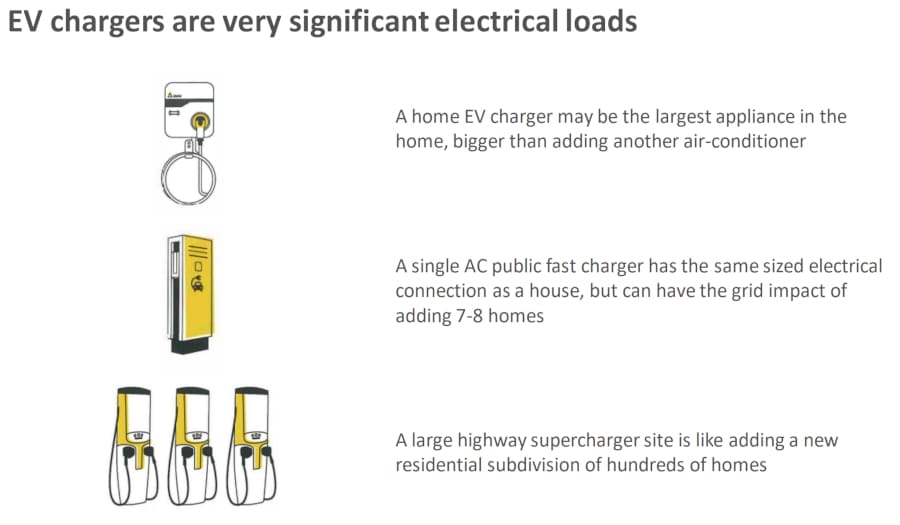
Sooner or later, EV charging will be managed by the networks
How Can They Do This?
Much like flexible export controls for solar power generation, SAPN wants the ability to dial down load as the conditions dictate. They’re not trying to hobble your solar or limit the amount you drive; you’d need a tinfoil hat to believe that.
SAPN wants to avoid emergencies when, say, major interconnectors have fallen over. Exerting some additional control is much more accurate with an internet connection than just turning everything up to eleven (or 260 volts AC, as the case may be) and hoping for the best.
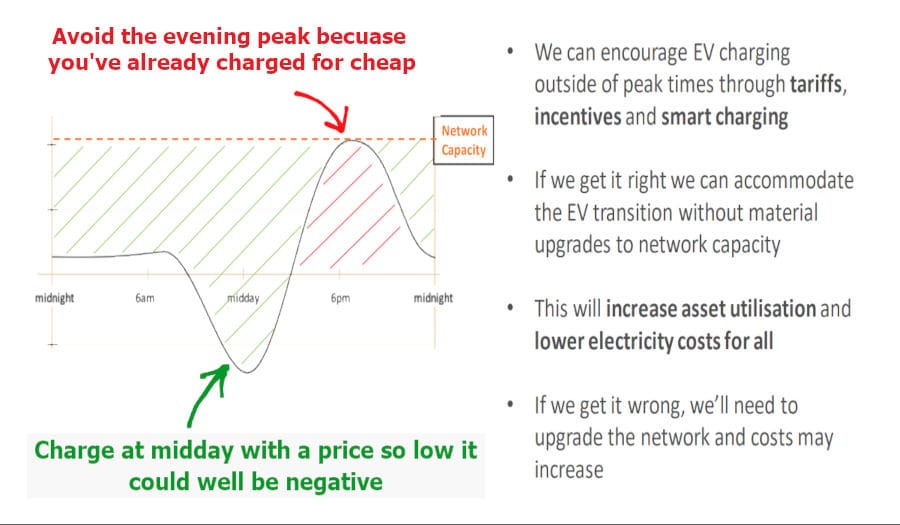
SAPN want OCPP so EVs avoid the evening peak shown in red.
EV Chargers in South Australia: Know the Rules
If you plan to install an EV charger above 20 Amps single-phase or 25 Amps per phase for a three-phase device, you must submit an application via SmartSA.
For sites with a capacity of less than 100 Amps, SAPN’s rules cap the maximum switched load at 32A per phase. SAPN’s EV charger rules are laid out here.
The Current Problem With Tesla Wall Connectors In South Australia
Right now Tesla is not OCPP capable, but that doesn’t mean it’s illegal in SA. Currently1 it has to be installed behind a 20Amp circuit breaker, so it’s a little better than a 15amp charger plugged into a wall outlet.
It took me days of emails and phone calls but thanks go to SAPN New Energy Services for clarifying this, and the Office of the Technical Regulator nodding along in sage agreement.
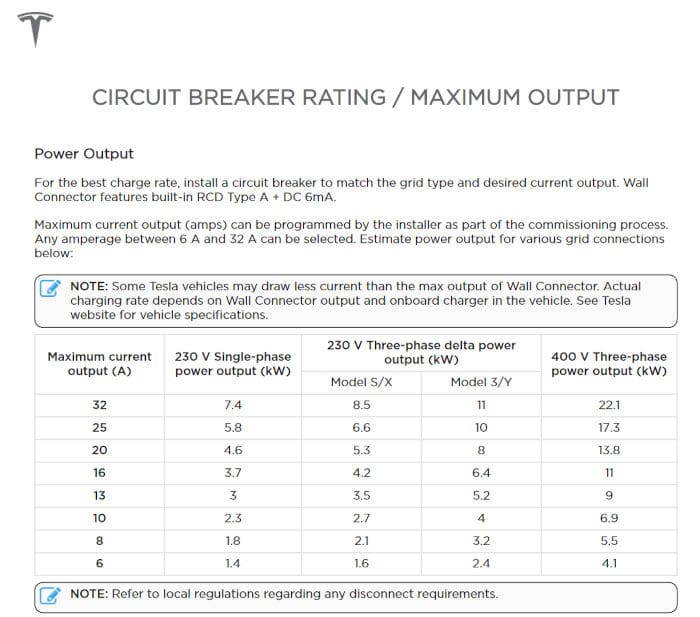
Tesla wall connector can be dialed down to just 6 amps but one installed today will need to be unleashed after the initial installation.
It’s Not What You Know, But Who.
Right when we thought Tesla should be chucked under the bus, Tesla reached out to me. It turns out there’s a rational explanation for why Tesla support said ‘no OCPP’ but SA’s Electric Vehicle Supply Equipment (EVSE) chart lists the Tesla Wall Connector as OCPP compatible.
The SA Government’s Functional Requirements have drawn Tesla out. Most available chargers meet these rules, but Tesla does not. So, the officials from Mines and Energy are placated by Tesla’s plan to add OCPP 1.6j integration in a future OTA update.
Why has Tesla not gone public until now? They want the enhanced security of OCPP 2.0 operational on their devices before they remotely update all the existing Gen 3 Wall Connectors sold in the last couple of years.
Things Are Looking Up
Requiring OCPP is genuinely smarter management coming from SAPN and the SA Government.
They’re getting ready for a huge shift in how we use energy, and it’s a much better approach than the knee-jerk “Smarter Homes” program for solar a few years back, which, comically, nobody had a market-ready solution for when it arrived.
If nothing, it proved regulations and rules can be introduced quickly if someone blinks.
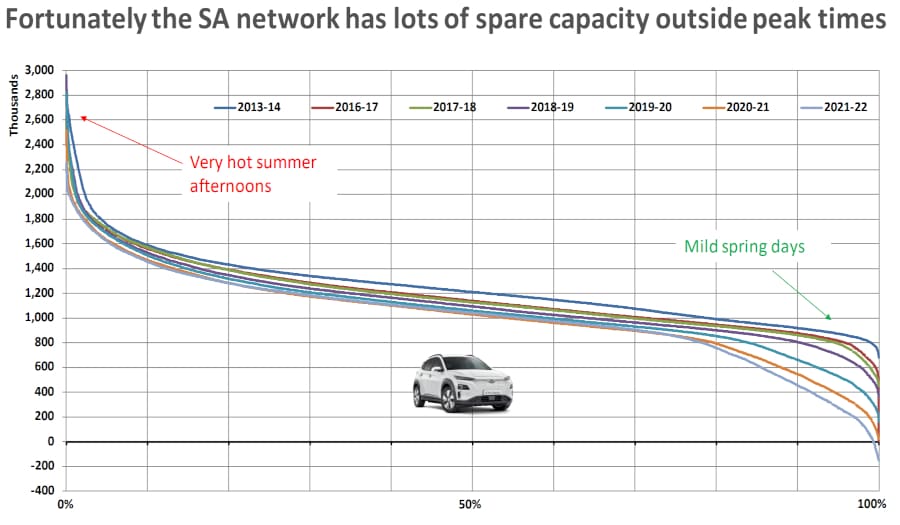
On the left, perhaps 3% of the time, EV charging needs to be turned down, whereas, on the right, there are more hours every year when EV charging will benefit the network.
Future Demand Response Programs
SAPN also outlined some other interesting details for us.
The Demand Response Pilot Program; launched to develop and test demand response strategies, including using EV chargers. For now, there are no demand response requirements for residential customers outside this pilot. However, you must install chargers capable of enrolling in such programs in the future.
Special Rules for Bi-directional Chargers. Also known as Vehicle to Grid (V2G) chargers, they’ll be treated in a similar fashion to solar inverters. i.e. Small Embedded Generators. It’s nice to see the regulators are in front of the demand that will inevitably hit once they go mainstream.2
Soon, Tesla Chargers Won’t Be Dumb
The Wall Connector has always been good value, and this additional feature set will make it pretty unbeatable as a home charger.
And I suspect they are almost all still being installed in SA with a full 40-amp circuit, despite the current lack of OCPP.
With these new guidelines and the SolarQuotes comparison table, you’ll be well-prepared to install your EV charger in South Australia or beyond. Stay compliant, and don’t be shy of the $800 Tesla home charger if you want to future-proof your setup and maximise the value of your EV.
Footnotes
Original Source: https://www.solarquotes.com.au/blog/tesla-ev-charger-sa/

